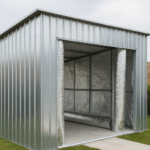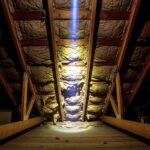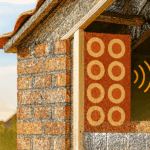Upgrade Your Home’s Efficiency. Reduce Energy Costs. Support a Greener Future.
The Hidden Power of Eco-Friendly Insulation: A Smarter Way to Save Energy and Strengthen Your Home
For any homeowner looking to reduce energy costs, improve comfort and contribute to a more sustainable future, the right insulation is one of the most effective upgrades available. Insulation plays a decisive role in controlling heat flow, easing the load on HVAC systems and ensuring stable indoor temperatures throughout the year. Choosing eco-friendly insulation materials amplifies these benefits by combining performance with environmental responsibility.
What Are Eco-Friendly Insulation Materials?
Eco-friendly insulation comes from sources that are recycled or naturally renewable—think of them as giving waste materials a second life. The main types are cellulose (recycled newspaper), recycled cotton (old textiles), and sheep wool (natural renewable fiber). Think of it like choosing to recycle your old paper bags instead of throwing them away, except they get transformed into something that keeps your home warm.

Why Performance Matters: How Insulation Works
Insulation works by trapping tiny pockets of air in its material—air doesn’t conduct heat well, so it slows down heat loss. The effectiveness is measured in “R-value”: higher numbers mean better insulation. Good news: eco-friendly materials achieve R-values of 3.1–3.8 per inch, which matches or beats traditional fiberglass.
Real-World Energy Savings
When homeowners switch to eco-friendly insulation, their heating costs drop noticeably. Cellulose reduces heating energy consumption by approximately 25% compared to fiberglass, while sheep wool achieves up to 28% savings. Over a 10-year lifespan, these savings compound significantly, offsetting the initial installation cost.

Environmental Benefits Explained
Beyond your utility bill, eco-friendly insulation reduces your home’s environmental footprint. These materials lower manufacturing emissions by 60%, divert 90% more waste from landfills, and contain 75% fewer chemical irritants than synthetic alternatives. Because they’re made from recycled or renewable sources, they reduce dependence on petroleum-based products, the same resource used for oil and gas.
The Smart Choice
Choosing eco-friendly insulation means investing in your home’s comfort, your family’s health through improved indoor air quality, and the planet’s future through reduced emissions. As building codes increasingly require energy efficiency, these materials also future proof your property’s value.
~Lakshya Vaishnav





